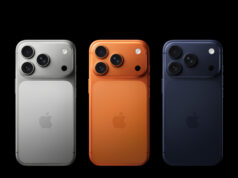In terms of performance and battery life, the iQOO Neo 10R and Poco X7 Pro are superior to the Nothing Phone 3a. They have faster charging times and displays with greater resolutions, and the X7 Pro has an IP69 rating. The RAM and storage capacities of the Nothing Phone are subpar.
The competition for the best phone under ₹25,000 has intensified as a result of iQOO and Nothing releasing their new mid-range offerings in a comparatively short period of time. Recall that earlier this year, Poco released the X7 Pro in India, which is already regarded as one of the most well-liked options in the market. A thorough comparison of the three gadgets can be found here.
iQOO Neo 10R specifications:
A 6.78-inch AMOLED screen with 1.5K resolution and a refresh rate of up to 144 Hz is a feature of the iQOO Neo 10R. The panel has HDR10+ certification, a maximum brightness of 4,500 nits, with 3,840Hz PWM dimming.
Built on a 4nm TSMC technology, it has the Snapdragon 8s Gen 3 chipset. According to the manufacturer, the device’s AnTuTu benchmark score is higher than 1.7 million. The smartphone has an e-sports mode, a 2,000Hz rapid touch sampling rate, and a 90fps gaming mode that lasts for up to five hours.
The optics of the back camera system include an 8MP ultra-wide-angle lens and a 50MP Sony main sensor with optical image stabilization (OIS). The front camera has 32 megapixels. Additionally, the phone can record 4K video at 60 frames per second.
The device is 7.98mm thick and contains a 6,400mAh battery. According to the manufacturer, the battery will retain more than 80% of its health after five years of use and enables 80W fast charging.
Poco X7 Pro specifications
The 6.73-inch AMOLED flat screen of the Poco X7 Pro 5G is shielded by Corning Gorilla Glass 7i. With a maximum brightness of 3200 nits and a 1.5K resolution, the screen provides excellent visibility in bright environments. With a touch sampling rate of 240 Hz and an instantaneous 2560 Hz rate made especially for gaming, it enables an adaptive 120 Hz refresh rate.
The POCO X7 Pro 5G is powered by the MediaTek Dimensity 8400 Ultra CPU, which is constructed on a 4nm TSMC technology and has a maximum clock speed of 3.25GHz. It has UFS 4.0 storage and LPDDR5X memory.
A 6550mAh Silicon-Carbon battery with Solid Electrolyte Technology powers the phone. It can be fully charged in around 47 minutes because to its compatibility for 90W HyperCharge.
The 50MP Sony LYT-600 primary sensor on the Poco X7 Pro 5G has an f/1.59 aperture and supports both electronic and optical image stabilization (OIS and EIS). The front camera is 20MP, and the ultra-wide camera is 8MP with a 120° field of view. Up to 4K video recording at 60 frames per second is supported by the gadget.
The Xiaomi HyperOS operating system, which is based on Android 15, promises three years of Android upgrades and four years of security fixes for this smartphone. The phone can withstand water jets and submersion up to 1.5 meters thanks to its IP66, IP68, and IP69 ratings for water and dust protection.
Nothing Phone 3a specifcations:
The 6.77-inch Full HD+ AMOLED display on the Nothing Phone 3a has a refresh rate of 120 Hz and a maximum brightness of 1300 nits. The phone is IP64 rated for dust and splash resistance and has Panda glass protection on top.
It has a Snapdragon 7s Gen 3 CPU that supports 256GB of UFS 2.2 storage and up to 12GB of LPDDR4x RAM.
The phone’s optics include a 50MP primary camera, a 50MP 2x telephoto lens, and an MP ultra-wide angle lens. There is a 32MP selfie camera on the front.
Although there is no adaptor included in the box, the phone has a 5,000mAh battery that supports 50W rapid charging. It is powered by Android 15-based Nothing OS 3.1.
Which is best phone under ₹25,000?
The iQOO Neo 10R and Poco X7 Pro are far better than the Nothing device in terms of performance and battery life, even if the three smartphones have comparable prices. Compared to the Phone 3a’s Full HD+ panel, the two devices have displays with significantly higher resolutions. They also include the charger in the box and have substantially faster charging capabilities (80W and 90W, respectively).
In addition, the Poco X7 Pro is the only phone on this list with an IP69 classification, which indicates that it is resistant to dust and water.
Nothing has a minor advantage with its 50MP telephoto shooter, but there are numerous questions over camera quality because the London-based company hasn’t had a stellar record in the past for camera optimization.
The LPDDR4x RAM and UFS 2.2 storage of the Nothing phone, in contrast to the LPDDR5x RAM and UFS 4.0 storage of the Poco and iQOO, are two areas where it falls short of the competition.







